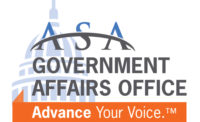Governor Gavin Newsom and the California State Legislature have enacted Assembly Bill (AB) 100 into law. Authored by Assemblymember Chris Holden, AB 100 adopts industry standard NSF/ANSI/CAN 61 2020 as the lead-testing requirement for certified endpoint drinking water devices sold in California.
AB 100 requires the following:
- Effective Jan. 1, 2023, a person is prohibited from manufacturing, and offering for sale in the state, an endpoint device, as defined, that does not meet NSF/ANSI/CAN 61-2020;
- Effective July 1, 2023, a person is prohibited from introducing into commerce or offering for sale in the state an endpoint device that does not meet that lead leaching standard;
- Requires consumer-facing product packaging or product labeling of an endpoint device that's intended to convey or dispense water for human consumption shall indicate that compliance with the "lead-free" standard by including the lettering "NSF/ANSI/CAN 61: Q ≤ 1" in an easily identifiable manner (consistent with NSF/ANSI/CAN 61 labeling requirements);
- Requires endpoint devices to be certified by an American National Standards Institute (ANSI)-accredited third party to show compliance with the "lead-free" requirements; and
- Defines an "endpoint device" as a single device, such as a plumbing fitting, fixture, or faucet, that is typically installed within the last one liter of the water distribution system of a building.
Plumbing Manufacturers International (PMI) announced it congratulates the decision.
“It is gratifying to see California adopt the NSF 61 requirement and validate the outstanding work of the committee, said PMI CEO/Executive Director Kerry Stackpole. "The adoption of this industry standard by California marks another innovation milestone in our industry's continual quest to deliver water-efficient and high-performing plumbing products."
The standard was approved by the Council of Public Health Consultants and ratified by the American National Standards Institute (ANSI) and the Standards Council of Canada (SCC), according to their standards development processes. The joint committee is comprised of balanced representation from the regulatory/public health, manufacturing and consumer sectors.




